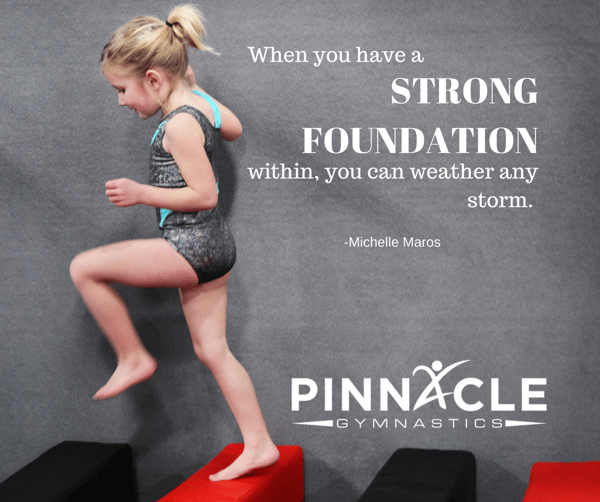A common question in gymnastics is, "When do I get to move up?” Moving up is an exciting part of being a gymnast, but there are important milestones one must hit before progressing to the next level. While most gymnasts take approximately one year to master a level, each athlete progresses at their own rate. In this post, you will learn how moving up is determined for each athlete and what you can do to help your child reach the next level.
Lesson Plans Are Created With The Student In Mind
When coaches and gyms prepare programs, they are doing so in order to make sure that the student is going to progress appropriately. Lesson plans are created to break down specific movements. This means that while a move may look like one fluid motion, there are a number of smaller progressions through that motion that need to be mastered. The lesson plans are organized to aid the teacher in the correct order, intensity, and frequency of practice for these progressions. Proper adherence to these methods ensures that the student safely and gracefully executes these movements, flowing from one to the next to create the whole motion.
Consistent Attendance Is Key
This is not something that can be done in a couple sessions, no matter how talented the gymnast is. Advancing through these levels requires regular attendance and consistent practice. Gymnasts need to put forth their best effort and listen to coaches to help them improve the techniques they are using to perform each skill. Putting forth this effort from the start is how Olympic gymnasts manage to look effortless in the execution and precision of their routines.
Skill Requirements
A proper gymnast is adept in all areas and on all apparatus. This means that to “move up,” gymnasts at each level must master skills on the vault, bars, beam, and floor. Levels increase in difficulty, and taking time out to go over rudimentary aspects of a particular exercise or piece of equipment hinders the student from mastering the subtleties of more complex movements. It also takes time away from other students. Furthermore, in gymnastics classes for kids, this is a safety issue, and students who have not mastered these skills pose a risk to themselves and others.
Safety
Most importantly, the levels are built upon each other to provide for proper skill development in a safe environment. Students who work through the lesson plans as they are set forth by their instructor are setting a foundation. This makes them prone to fewer injuries over time, and results in a greater longevity of ability, whether your child is a gymnast by hobby, or they plan to take this all the way to the Olympics.
If you have questions about lesson plans, or wish to seek individual instruction for your child in any area of skill development, please contact us here.


